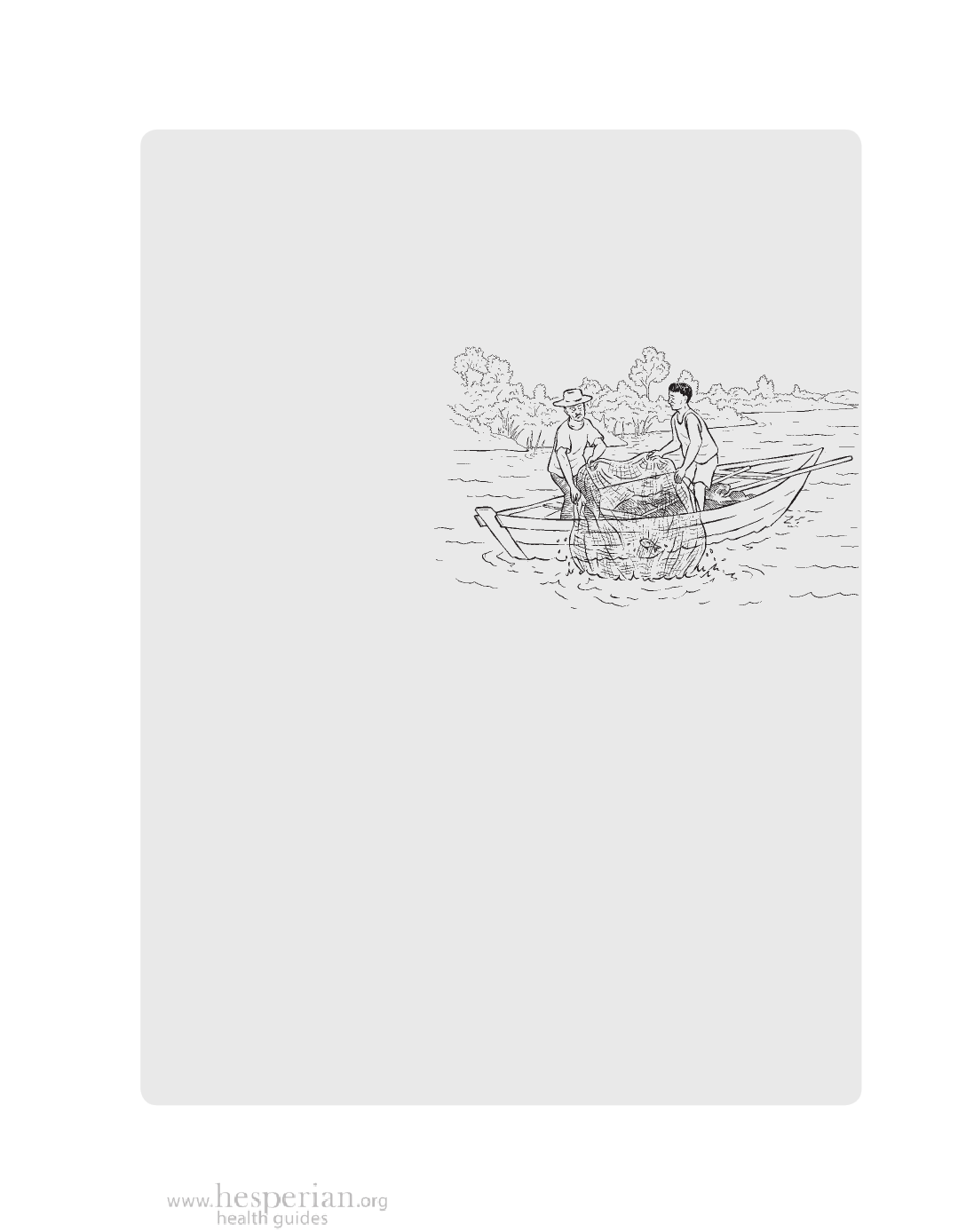
Contaminated water 483
Community action saves a river
In the northern Philippines, the Abra River runs from high in the mountains
through lowland farms and into the China Sea. For many generations,
communities along the Abra River made their living from farming, fishing,
handicrafts, and small-scale mining of gold and copper. In recent years, large
corporations have begun mining the area’s gold, causing great harm to the
river, the wildlife, and the people who live there.
Mining companies cleared
forests to dig the mines,
causing the river and the
streams that feed it to fill
with silt and dry up. Many
kinds of birds, animals, and
plants have disappeared. The
river has been poisoned by
chemicals spilled from waste
ponds and from acid mine
drainage. People living along
the Abra River suffer from
headaches, dizziness, coughing, chest
pain, nose and eye irritation, skin rashes and diarrhea,
as well as long-term problems like hunger from crop loss year after year.
In response to these problems, local people formed a group called Save
the Abra River Movement (STARM). STARM protects land and water rights
in many ways. STARM educates communities and government officials
about the dangers of mining. It organizes petitions and rallies to make local
demands known. It monitors water quality through a partnership with local
universities, which contribute equipment and scientists, and local people’s
organizations that act as witnesses, guides, and water collectors.
Armed only with cell phones and cameras, community-based water
monitoring teams alert each other about unusual events. For example,
when a lot of fish started dying downstream, community leaders upstream
investigated and found that an a strange chemical smell was coming from
the mine drainage. University scientists were alerted and quickly sent water
containers so they could sample river water for toxics.
Dangerous mining continues along the Abra River. But the Save the Abra
River Movement is forcing mining companies to stop the most harmful
practices, and the communities are asserting their rights to a safe and
healthy environment.
A Community Guide to Environmental Health 2012